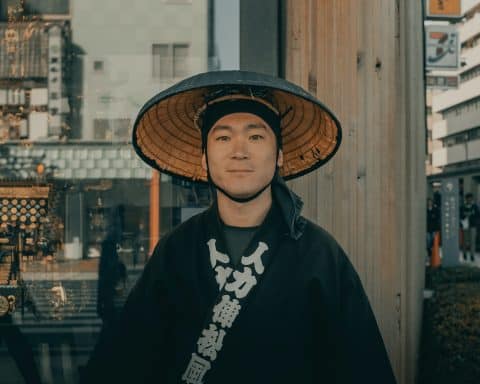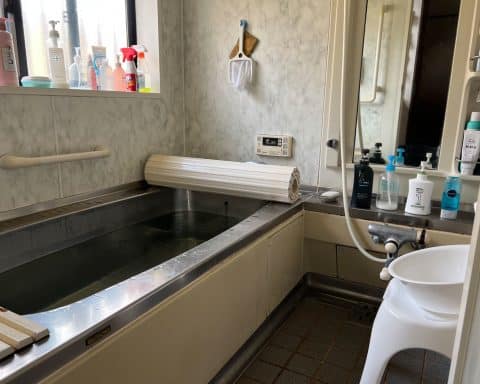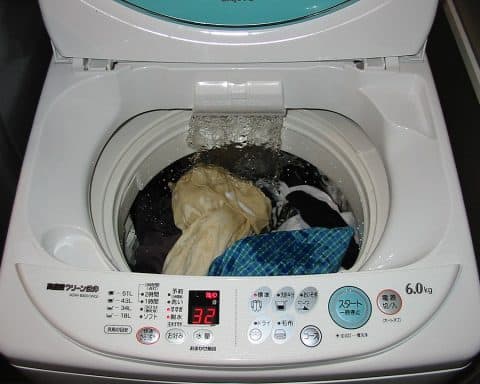If you’ve only ever slept on Western-style beds your whole life, the prospect of sleeping on the floor may sound strange to you. However, after sleeping on a futon in Japan for the best part of a year, I no longer need to ask the question: Why do Japanese people sleep on the floor?
For Japanese people sleeping on the floor is and has been a proud cultural tradition for thousands of years. It also helps save space, is safer in natural disasters, and does a world of good for your back.
Understanding Japan’s unusual floor culture
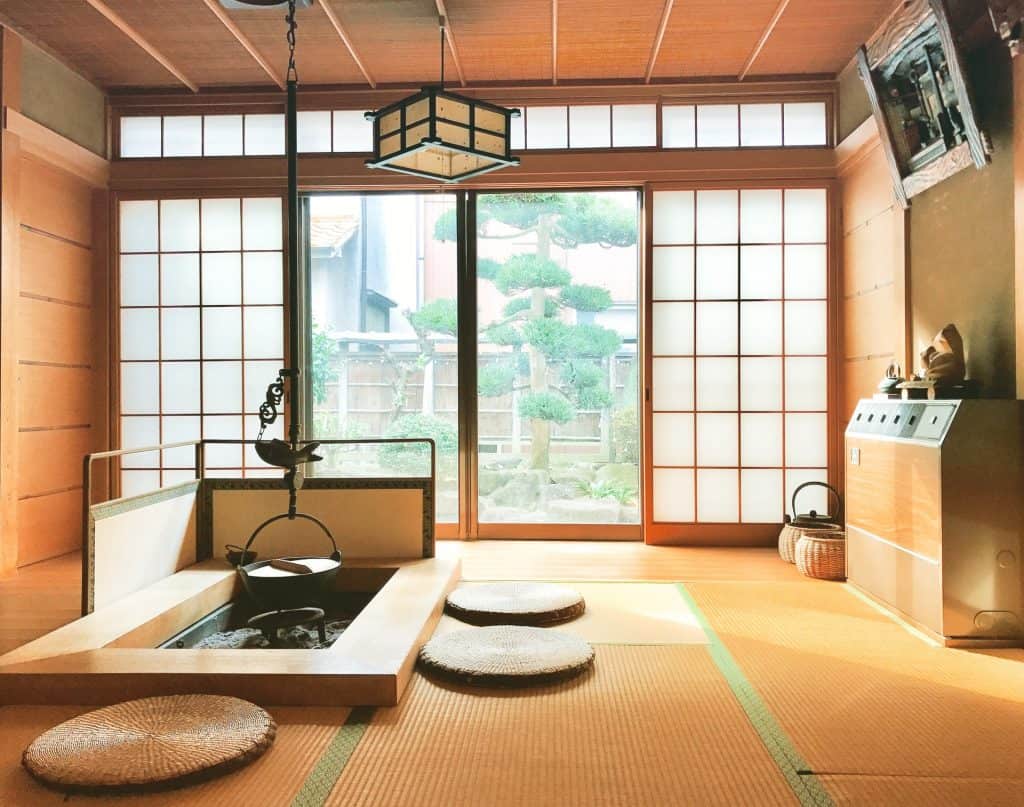
To truly understand the reasons Japanese people sleep on the floor, we first have to understand their relationship with the floor in other areas of life.
For example, people in Japan will traditionally eat on the floor and sit on the floor while watching tv or simply relaxing.
This practice is called ‘Floor culture’ or ‘Tatami culture’.
I’ve always enjoyed sitting on the floor because of how grounding the whole experience feel to me, though after so many months, I do miss a comfy sofa every once in a while.
But what reasons could they possibly have to not use a chair or sofa?
Tradition
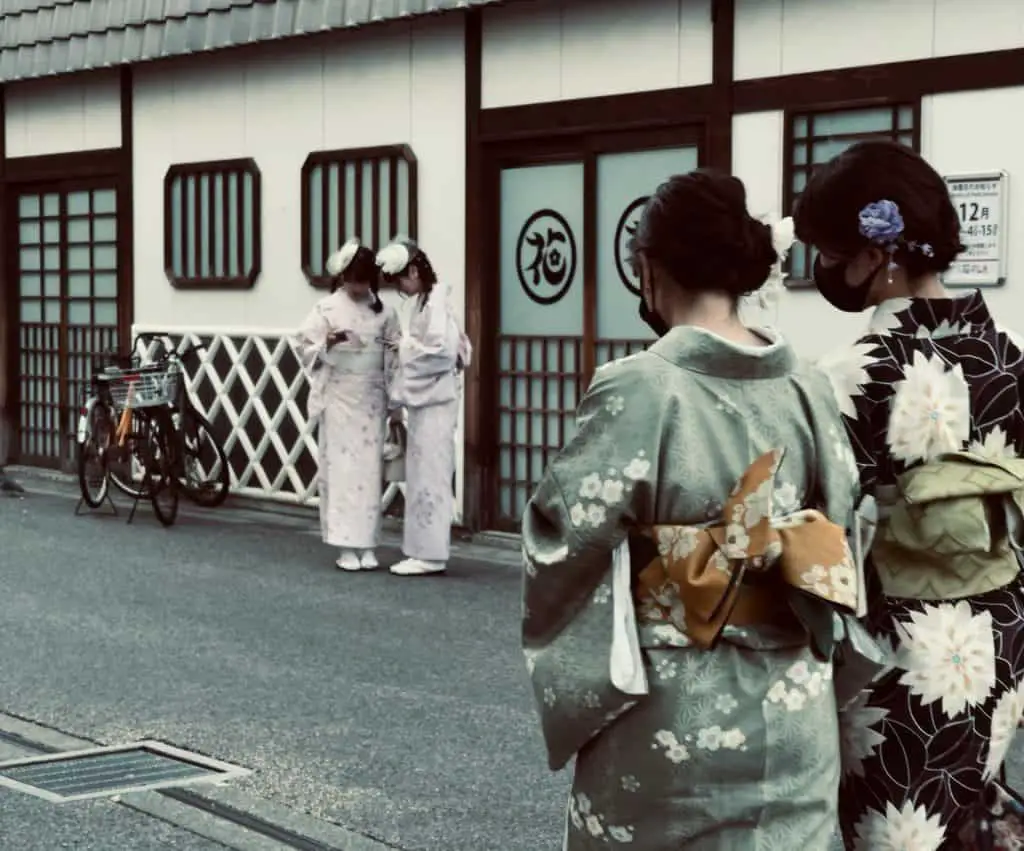
Tradition is potentially the biggest reason Japanese people sleep on the floor, and sit on it for other occasions.
We already know from this article about Japanese concepts that tradition is an extremely strong part of Japanese culture, so it’s no surprise that it’s something they continue to do to this day.
It may surprise you to know however that the tradition of sitting on the floor (and sleeping) didn’t come from Japan in the first place. It actually came from a similar ‘floor culture’ in China but was later adapted into ‘Tatami Culture’ in Japan.
However, this tradition is still so deeply rooted in the heart of Japan that it’s commonplace to go to a five-star restaurant in the capital and sit on the floor. Likewise, you’ll find that almost all hotels catered towards tourists have Western-style and traditional-style rooms available.
I must clarify that you will almost always have a cushion or floor chair to sit on in such places. You’re most likely to find this setup at traditional restaurants, but it’s fairly common
Damage

Tatami floors are not solid like wood or concrete. Instead, they are made from compressed rice straw.
Whilst the use of tatami helps regulate the interior temperature of a Japanese home, they don’t support weight nearly as well as other floor types do.
For this reason, Japanese homes tend not to put furniture such as tables and chairs on their tatami due to the very high chance of damage.
Instead, you’ll find low furniture, chairs without legs to help dissipate weight, or no furniture at all.
Space
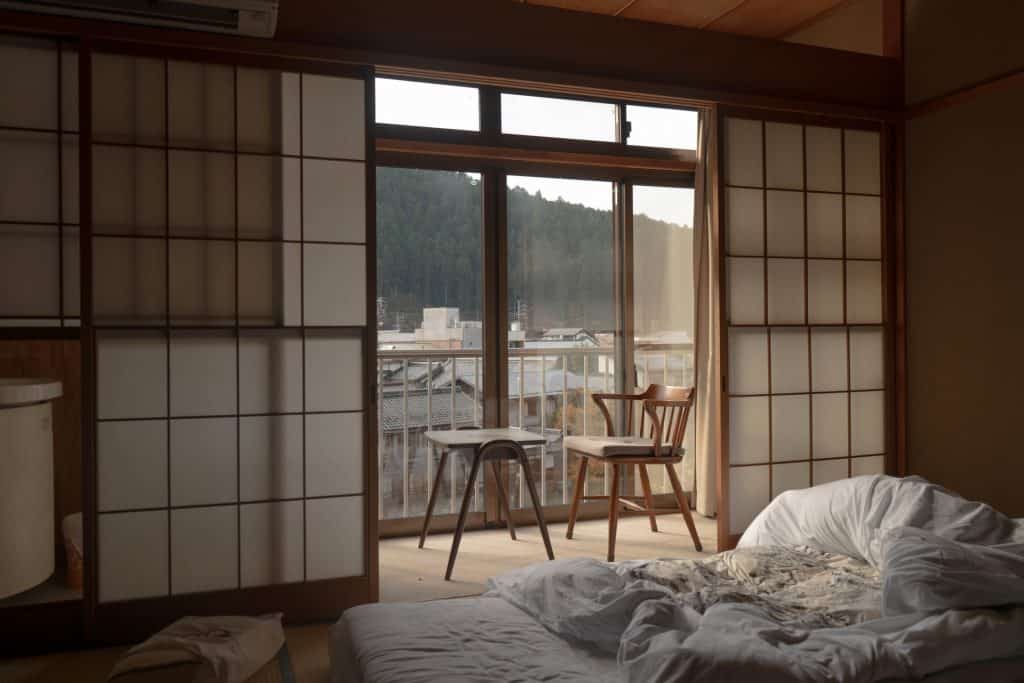
In case you haven’t realized already, Japan is a very small country.
The total space of all the Japanese islands is about 142,000 square miles. To put that into perspective, that’s smaller than the state of California.
Although Japan’s population is expected to plummet over the next decade, the vast majority of cities are still extremely overpopulated. Hence the reason for such a high number of tiny flats in urban areas.
It’s also extremely rare to find a house anywhere near the city that includes any outside space.
Because of this space shortage, the people of Japan had to adapt to ensure their quality of living remained acceptable.
For many, this means having only a single room to eat, sleep, relax, and prepare meals in. None of which would be possible with a western style bed. They weigh an absolute ton and are far to big to allow anything but sleep in the room they’re placed in.
The solution?
Small lightweight beds and furniture.
Including tiny ovens, and Japanese washing machines
Safety
Japan is a country that frequently experiences natural disasters, and the most dangerous of those are earthquakes.
According to JRAILPASS, Japan experiences around 1,500 earthquakes per year. That’s just over 4 per day!
The reason for this is clear. The country is home to ten percent of the world’s active volcanoes and is positioned over 4 tectonic plates. An absolute recipe for disaster.
But being in such a precarious position means they’re also the most prepared for any situation likely to come their way. Most notably, earthquakes.
Take a look at this video by Bloomberg to see just how Japanese architects are building structures designed to take the high demands of these earthquakes.
This is one way they cope with the effects of earthquakes, but another more simple way is by choosing the correct furniture inside their homes.
By sticking to only low-profile furniture (including beds), you cut out the risk of further damage by having fewer things that could collapse and survive the shaking from earthquakes. This also ensures a faster and safer escape should they need to evacuate their homes.
How do they sleep on the floor?
It’s easy to imagine after reading that, that when we say sleeping on the floor we mean literally sleeping on the floor. But let me assure you that’s simply not the case.
The solution to finding somewhere (and something to sleep on) that is safe, space-saving, won’t damage the tatami, and keeps in line with tradition was simple.
A Japanese futon.

A Japanese futon is not to be confused with a western style futon bed. The Japanese style is a lightweight and thin mattress with a duvet.
What does sleeping on a Japanese futon feel like?
I would liken it to sleeping on a comfy duvet on the floor but with an extremely hard mattress (the floor). It’s lightweight, low profile, and feels right at home with tatami flooring.
You might also come across buckwheat pillows during your stay in Japan.
Buckwheat pillows, or sobakawa, are filled with the outer casings of buckwheat seeds. Not only do they offer incredible support for your head and neck, they also provide increased airflow which prevents humidity and mold, and promotes a cooler sleeping environment making it easier to get a good night’s sleep.
That means that if the only room you have in your house looks like the one above, you can roll away your beds and use the same space for eating or recreational activities and won’t have to worry about space or damp issues.
A typical day in a house with one communal space may look like the following:
- Wake up and roll your futon up. Place them in the cupboard or other storage space. If no storage space is available, keep them folded in the corner.
- Move table (and sometimes floor chairs) into position and eat breakfast with the family.
- Move the table out of the way to allow the communal area to be used for recreational activities such as yoga, physical activities, or workspace.
- Rest table for lunch and dinner when appropriate.
- Lay out your futons when you intend to sleep.
- Repeat step one each morning.
What is the sleep culture like in Japan?
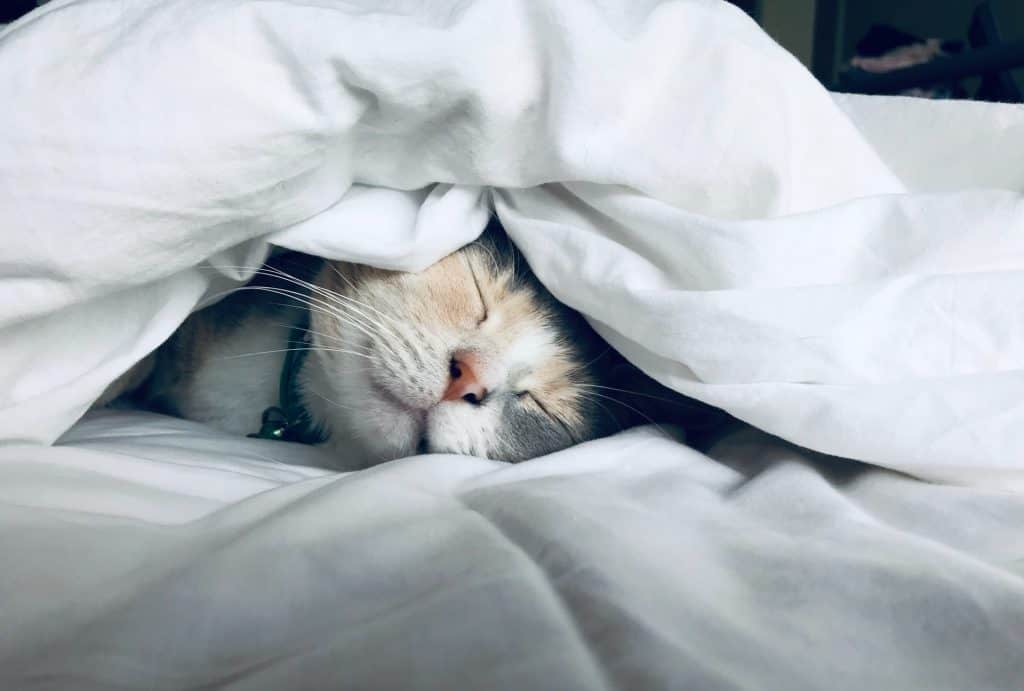
Have you ever been so tired at work that you thought you might fall asleep?
In Japan, this is a common occurrence, but it’s not frowned upon. In fact, it’s quite the opposite.
Inemuri: To be present while you are sleeping
Whilst we have naps in the West, many Japanese people have ‘Inemuri’.
Most of us already know how strong the Japanese work ethic is, so it’s no surprise that lots of people work until they can literally work no more. It’s because of this mindset that working from the early hours of the morning to very late at night is extremely common.
Taking personal time off to recharge your batteries would be discouraged and you would most likely be seen as someone with the wrong priorities.
And so falling asleep in a meeting, at your work desk, or on the train is almost always a sign that you put your company’s interest before your own and have a strong commitment to your job.
Whilst you may not get a great or full night’s sleep if you’re working in Japan, by using the practice of Inemuri you’ll be able to catch up in a sort of ‘Pay as you go’ sleep contract.
I’m no sleep expert, but I highly recommend against this practice if you’re considering it. If you have the opportunity to get 8 hours of quality sleep per night, you should!
So this might be another reason Japanese people opt for the cheaper futon mattresses instead of western style beds. What’s the point of spending big on something you hardly ever use?
The benefits of sleeping on a tatami mat

Not only is sleeping on tatami a cultural tradition dating back thousands of years, but it also comes with a whole host of health benefits.
- Great for your neck and back
Lying down on a flat and hard surface means there are no dips in the bed. This means each part of your body is evenly supported which helps contribute to a great night’s sleep and leaves you in less pain in the morning.
2. Promotes healthy blood flow
When you lay down on a hard surface like a tatami mat, your entire body is aligned. This means there are no obstructions to breathing and blood flow and your spine is kept aligned.
If you find yourself in all sorts of positions throughout the day and often have a painful back, this will be especially beneficial to you.
3. Allows you to feel more at one with your surroundings
Whilst grounding is supposed to prevent you from experiencing jet lag, I believe there is some possibility it can help you achieve a better night’s sleep.
I know that whenever I wake up from sleeping on a futon I always feel more connected to the start of the day than I do waking in a western bed.
I haven’t found any scientific evidence to back this up, but it always feels this way when I wake up from a futon so it’s going on the list!
Will I have to sleep on the floor in Japan?
If after this entire article I haven’t convinced you that you should try sleeping on the floor, you can breathe a sigh of relief because when you visit Japan you won’t have to!
The first reason you won’t have to sleep on the floor during your trip to Japan is that there are so many other options.
You’ll have loads of chain hotels in the city that are completely the same as Western hotels, Japanese hotels almost always offer Western-style rooms, and Airbnbs all over the country that offer pretty much any sleeping arrangement you can imagine.
Take a look at 19 of the best Airbnb’s you should stay in on your trip to Japan!
Conclusion
Whilst it’s clear there are a whole host of benefits to sleeping on the floor, it’s understandably not going to work for everyone.
I’m a relatively fit twenty-something-year-old who has no problem getting up from and down to the floor, but elderly people or people with back problems may not be able to do it so easily.
But if you can easily get to the floor and are wondering what effect sleeping on the floor (on a futon) might have on you, I urge you to give it a go!
And just because you can’t get to Japan is no excuse!




